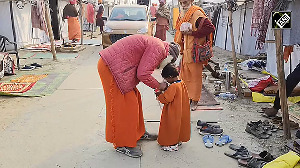The World Trade Organisation's negotiations on agriculture consist of three pillars -- market access, domestic support and export subsidies.
Business Standard begins its coverage on the Hong Kong ministerial meeting, that starts on December 13, with the proposals put forward by key players on reducing the import duty for agricultural products to increase market access.
While there is a wide divergence on the extent of tariff cut, WTO members have agreed to convert specific duties into ad-valorem duties to have a uniform basis for tariff reduction. Countries have also agreed to segregate duties into four broad categories or bands.
These categories of duties and the cuts to be made under each category are yet to be decided. There is also no agreement on what should be the highest tariff for developed and developing countries.
G-20
It has suggested that developed countries reduce tariffs by 45-75 per cent, while developing countries lower their import duty on agricultural products by 25-40 per cent.
According to its estimates, developed countries would have to reduce tariffs by an average 54 per cent, while the average reduction for developing countries works out to 36 per cent.
United States
The world's largest trader is seeking the maximum tariff cuts to push its agricultural products into other markets. For developed countries, it has proposed a tariff reduction of 55-65 per cent for commodities attracting lower import duty and 85-90 per cent cuts for the higher duty slabs.
It has suggested that developing countries undertake marginally lower commitments. Further, tariffs for developed countries should be capped at 75 per cent and 100 per cent for the developing countries. The US proposal has been termed "unrealistically ambitious" by most countries.
European Union
For developed countries, it has proposed that tariffs be reduced by 35-60 per cent, while proposing that developing countries reduce import duty by 25-40 per cent. The 25-nation union has also suggested a tariff cap of 100 per cent for developed and 150 per cent for developing countries.
WTO lexicon
Bound tariff: The maximum tariff that can be levied on an imported product.
Applied tariff: The tariff actually levied on an imported product.
Water in tariff: The difference between the bound and the applied tariff.
Special products: Agricultural products on which there will be nil or marginal tariff reduction.
Special safeguard measures: Flexibility to developing countries to impose quantitative restrictions in case of a surge in imports or a swing in international prices.







 © 2025
© 2025